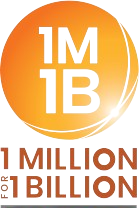The United States is home to several prestigious and top-ranked universities. From Harvard to Yale, MIT, and Stanford, American institutions often lead global rankings, making the US one of the most sought-after destinations for higher education. The country attracts not only domestic students but also thousands of international students every year.
However, higher education in the US comes at a high cost.
Delhi Election Results 2025
Without securing a scholarship, many students are forced to rely on student loans. Fortunately, numerous universities offer various scholarships and financial aid programs. Some even provide specialized scholarships for specific student groups.
Today, we will focus on one such group—BIPOC students—and explore the scholarships available to them.
Who Are BIPOC Students?
BIPOC stands for Black, Indigenous, and People of Color. The term acknowledges the unique experiences and systemic challenges faced by non-white communities, particularly in education, employment, and social justice. It highlights the need for inclusivity and equal opportunities for historically marginalized racial and ethnic groups.
How Can BIPOC Students Secure Scholarships for College Admissions?
While the US Supreme Court has ruled against race-conscious admissions policies, over a billion dollars in scholarships are still available for Black, Indigenous, and other students of color, according to U.S. News.
A recent report by the National College Attainment Network revealed that low-income and minority students missed out on an estimated $3.75 billion in federal Pell Grants simply by failing to complete the Free Application for Federal Student Aid (FAFSA).
According to College Educated, the five-year graduation rate for Black students is 40.5%, slightly lower than Hispanic or Latino students at 41.5%, compared to 62.2% for white students. Additionally, 62% of students from high-income families graduate with bachelor’s degrees, whereas only 13% of students from under-resourced communities do, according to 2021 data from the Pell Institute.
Given these statistics, it is crucial for prospective college students to start researching and applying for scholarships early, ideally beginning in their freshman year of high school. Focusing on academic performance, extracurricular activities, and personal development can significantly increase a student’s chances of winning multiple scholarships over time.
Scholarships Available for BIPOC Students
Here are some examples of the available scholarships for the BIPOC students:
Point Foundation BIPOC Scholarship: This scholarship aims to counteract generations of racial discrimination and systemic barriers in education. It provides financial aid, community resources, and professional development to LGBTQ students who identify as Black, Indigenous, or People of Color.
The Gates Millennium Scholars Program: This prestigious program offers scholarships to 20,000 outstanding students of color, covering a significant portion of college expenses, with some recipients receiving full-tuition scholarships.
NSHSS Diversity Scholarship: Offered by the National Society of High School Scholars (NSHSS), this scholarship awards $2,000 to five high school sophomores, juniors, or seniors who have demonstrated a strong commitment to diversity and inclusion initiatives in their schools, communities, or workplaces.
MNACC BIPOC Scholarship: The Minnesota Association of Counselors of Color (MnACC) offers this scholarship to incoming freshmen who aspire to work as school counselors. It is specifically for students of color in Minnesota. Recipients receive a one-time financial award to help cover tuition, fees, books, supplies, transportation, and other college expenses.




